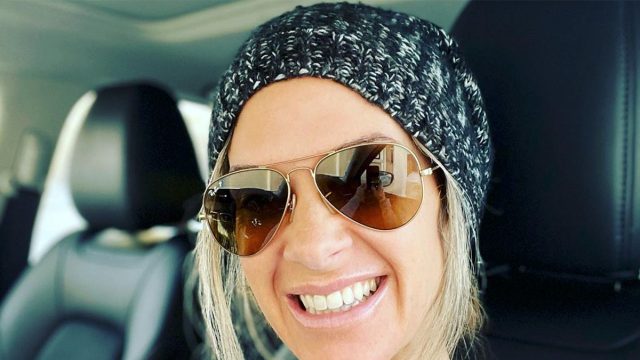This Woman Lost 15 Pounds in 90 Days Using These 4 Simple Food Rules
Trish Koeslag, who lost a whopping 15 pounds, is revealing the truth about her weight loss. In a new social media post, the women's nutrition and fitness coach, whose mission is to help women over 40 simplify macros and movement to lose weight, reveals the four diet tips she always follows when she wants to lose weight. "These save me when I'm dieting, " she writes. "Let's get into it."
I Eat Foods I Love…But in Moderation
"I eat chocolate every day, but … I eat it in moderation," says Trish. "I weigh out a moderate portion of chocolate chips, and I'll add it to my last meal of the day (which is always something sweet like my creamy ice cream or my chocolate mug cake). Eating foods you love, even when 'dieting' is a must."
I Don't Eat Foods Just Because They Are Healthy…But I Prioritize Whole Foods
"I don't buy into eating foods just because they're "healthy" for me, but …I do prioritize whole foods 90% of the time because they offer the nutrients my body needs to thrive," says Trish. "If you don't like Brussels sprouts, don't eat them."
When I Crave It, I Will Eat It…But I Track It
"When I crave something, I eat it, but … I will weigh it and track it in my food tracking app (I use My Macros Plus). Because let's be honest if you eat something but don't track it, you've still eaten it; integrity is a must," she writes.
If I Have Three Days of Non-Compliance, I Will Pull the Plug…But I Will Do It Again Another Season
"If I have 3 days of non-compliance, I pull the plug on fat loss, but …This doesn't mean I am a failure," she says. "It means that we have seasons in our life; fat loss is not for every season."
Also, She Recommends Reverse Dieting
In another post, Trish offers a few more tips on how she slimmed down, starting with following a reverse diet protocol. "Most people do not do this part, and this is a huge reason why people gain fat back," she says.
RELATED: This Plan Is How to Lose 5 Percent Body Fat In 2 Weeks
Eating at Home Is Also Key
In addition to "tracking your food," keeping "your protein high," and choosing "mostly whole foods (90% whole foods vs 10% fun food'," Trish recommends eating at home "most of the time," which she calls "a big one."
Hydrate and Rest Are Crucial
Hydration and rest are also key. "Limit alcohol, keep water intake at 3-4L/day, sleep well, manage stress," she says. Sleep boasts lots of benefits, per the Sleep Foundation. Not only is it a mood booster, it promotes heart health, regulates blood sugar, improves mental function, restores your immune system, helps relieve stress, and aids in weight loss.
Invest in a Food Scale
In another post, Trish recommends investing in 5 items to help you achieve your weight loss goals. "Get yourself a food scale and start weighing and tracking your food in grams. This will help you accurately measure how much food you're eating. I've been testing out Cronometer and think it's a great app for food tracking!" she says.
RELATED: I'm a Nutritionist and Here Are 19 Protein Truths You Need to Hear
Buy a Big Water Bottle
Splurge on that, Stanley! "Grab a 2L water bottle and fill it up every morning; take it with you wherever you go. Water flushes out toxins, reduces water retention, improves workout performance, and helps control snacking," advises Trsih.
Stock Up on Meal Prep Containers
"Stock up on meal prep containers," she continues. "If you prep food ahead of time and plan your meals for the day ahead of time, it will make it so much easier to stick to your nutrition goals."
Find a Fitness Tracker
"Look into fitness trackers and invest," she says. "This will help ensure you are getting enough steps in and will monitor your overall activity levels. Are fitness trackers spot-on accurate? Nope! But it can set a baseline for you!"
RELATED: I'm a Nutritionist and Banned These 4 Harmful Food Additives From My Kitchen
Find a Journal and Start Writing
"Spend a few bucks on a journal and take 5-10 minutes every morning to set your intentions for the day. This doesn't mean your day will be perfect, but in my personal journey, setting my intentions for the day always gets my mind in the right place," she concludes. And if you enjoyed this article, take advantage of these 15 Quick Ways to Lose Body Fat Percentage in a Week.





